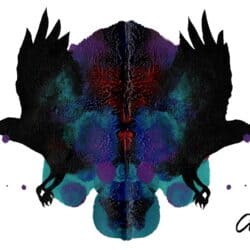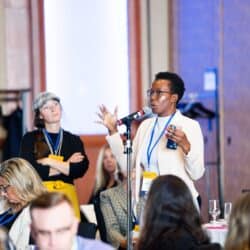This article was developed from a paper presented at the International Congress of The World Federation of Friends of Museums, Treviso, Italy, June 2, 1993.
Responding to a request from the Board of Trustees, volunteers have established a reproduction program at the Royal Ontario Museum of Toronto, Canada. Perhaps the success of this undertaking may inspire other Friends to do the same for the financial benefit of their own museums.
The Royal Ontario Museum is a museum of Art and Archaeology and the Natural Sciences which had two established shops, one a gift shop, the other a children’s shop, both professionally run using a unionized staff and stocking a wide range of goods from around the world. The Chairman of the Board of Trustees in the mid-1980s was distressed that these shops did not carry reproductions representing the Museum’s own collections, and he appointed a committee to investigate the possibility of establishing a reproductions program. With the Museum fully committing its funds to gallery development at that time, the obvious route was the volunteer one.
The Museum’s volunteer committee of some 30 years’ standing accepted the challenge, and ROM Reproductions was born. It was established as a non-share capital corporation, a separate entity. A contract was drawn up between the Museum and ROM Reproductions, showing the reproduction function to be separate and distinct from that of the other museum shops. It made clear that the volunteers would be performing a function not being performed by the unionized staff so that the unpaid sales staff of ROM Reproductions would not be taking jobs away from union members. The mandate was to sell only reproductions and adaptations of artifacts and specimens in the Royal Ontario Museum collections.
A small shop of approximately 200 square feet was built in space provided by the museum just inside the front entrance and just outside the main museum gift shop. Approximately $89,000 was obtained to finance the building of the shop and the production of inventory. It came from three sources. Friends of the Museum were asked to lend units of $500 that were non-interest-bearing loans but gave a 20 per cent discount on any purchase made. These units were to be redeemable by lot by the year 2001. In fact the loans, totalling $31,000, were all repaid within 16 months of the opening of the shop. Some people preferred to donate money to the Museum in return for a receipt for tax credit. The Museum in turn lent this money to ROM Reproductions. It amounted to approximately $42,000 and was repaid to the Museum within three years of the opening of the shop. Thirdly, the parent volunteer body donated about $16,000.
The shop opened for business at the end of May, 1987. There are basically two shifts of two staff members a day, with the shop being open every day the Museum is open, and always on Sunday. Annual profits have bounced around the $100,000 mark ever since opening, going from a low of $90,798 the first year to a high of $122,622 in 1989-90. ROM Reproductions has made yearly grants for acquisitions to the Museum, for a total of more than $300,000 up to June, 1992, with a further donation of $100,000 in June of 1993.
The production of merchandise was divided into nine categories: paper, jewellery, textiles, sculpture, ceramics, needlework, metals, glass and wood. A team of one or two Friends is in charge of each category with the responsibility of ferreting out suitable items for reproduction and for developing the product from concept to the complete piece ready to be put on the shelves of the shop and offered for sale. When the choice of an item for reproduction has been made, it is brought to the production committee. Once agreed upon, the item requires curatorial and conservation approval. The prototype and final production model must also have the approval of the Director’s Reproduction Review Committee, a curatorial group appointed by the Director of the Museum.
Next, a contract is made with a manufacturer or artisan to produce the chosen item. ROM Reproduction makes two types of contracts: one in which the item is to be made exclusively for the Museum, and the other, a licensing agreement, wherein the manufacturers assume all development costs and may sell wherever they please, paying the Museum a royalty of between 7 112 and 10 per cent on the wholesale price of all items sold.
Examples of our products would include a tie or scarf made exclusively for ROM Reproductions, placemats depicting historic Canadian scenes taken from early engravings (made under licensing agreement), other paper products and textiles, and ceramics and needlepoint, on which designs from paintings, prints or textiles have been imposed. Our best seller has always been jewellery. In most instances, jewellery is taken from a mould of the original, the mould having been made by a member of the museum staff. We also produce adaptations, where the manufacturer creates a piece from a design in a picture or a book, or, for instance, designs a silver brooch inspired by a bronze Egyptian cat burial figure.
ROM Productions is an entirely volunteer operation. It is an exciting and rewarding project that stimulates knowledge of the Museum’s collections among those involved in producing and selling the reproductions. At the same time, it increases an awareness of the Museum’s collections among those who buy our products. And-need I make the point-it makes money for the Museum.
K. ELIZABETH RHIND
Royal Ontario Museum, Toronto

